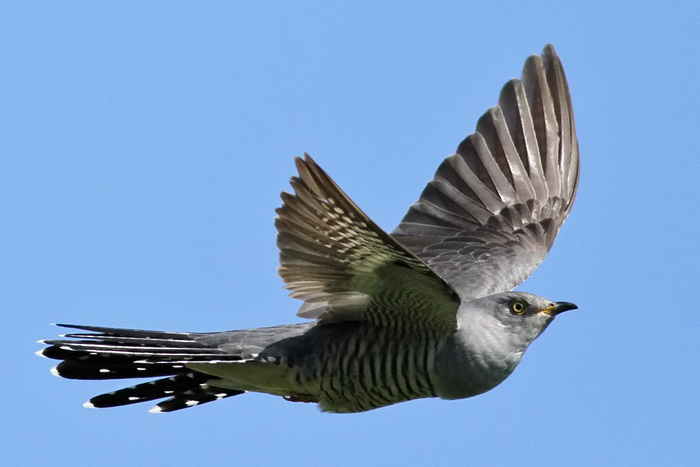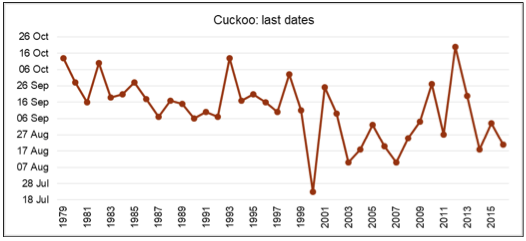Common Cuckoo Cuculus canorus

This popular harbinger of spring is missing for an increasing number of folks in Lincolnshire. The Atlas put the population in the late 1980s at 1000 to 1500 pairs. The BBS index chart shows that it has declined by over 70% in the county between 1994 and 2019. The APEP4 adjusted Lincs population in 2016 was 200 pairs, but there may still be a few more than that. They still seem to do well in coastal dunes scrub where there are plenty of caterpillars and less application of pesticides. Recent advances in satellite tracking have highlighted that the British Cuckoo population winters in the Congo basin and returns each spring via Spain. In autumn cuckoos from northern parts of Britain follow a different migration route via Italy while the southern population is more likely to go via Spain. The population in the north of Britain seems to be doing much better, suggesting that something is going wrong on the autumn Spanish migration route and causing Lincolnshire Cuckoos to decline. Continuing research will hopefully shed more light on the precise reasons for the decline. Hopefully it may yet be reversed.


Two foreign-ringed Cuckoos have been found in the county: a first year bird ringed in The Netherlands in August 1967 was killed by a car at Sleaford in July 1969, and another first year bird ringed on Helgoland, Germany in July 1971 was caught (recovered) in Wragby in June 1972.
(Account as per new Birds of Lincolnshire (2021), included September 2022)
